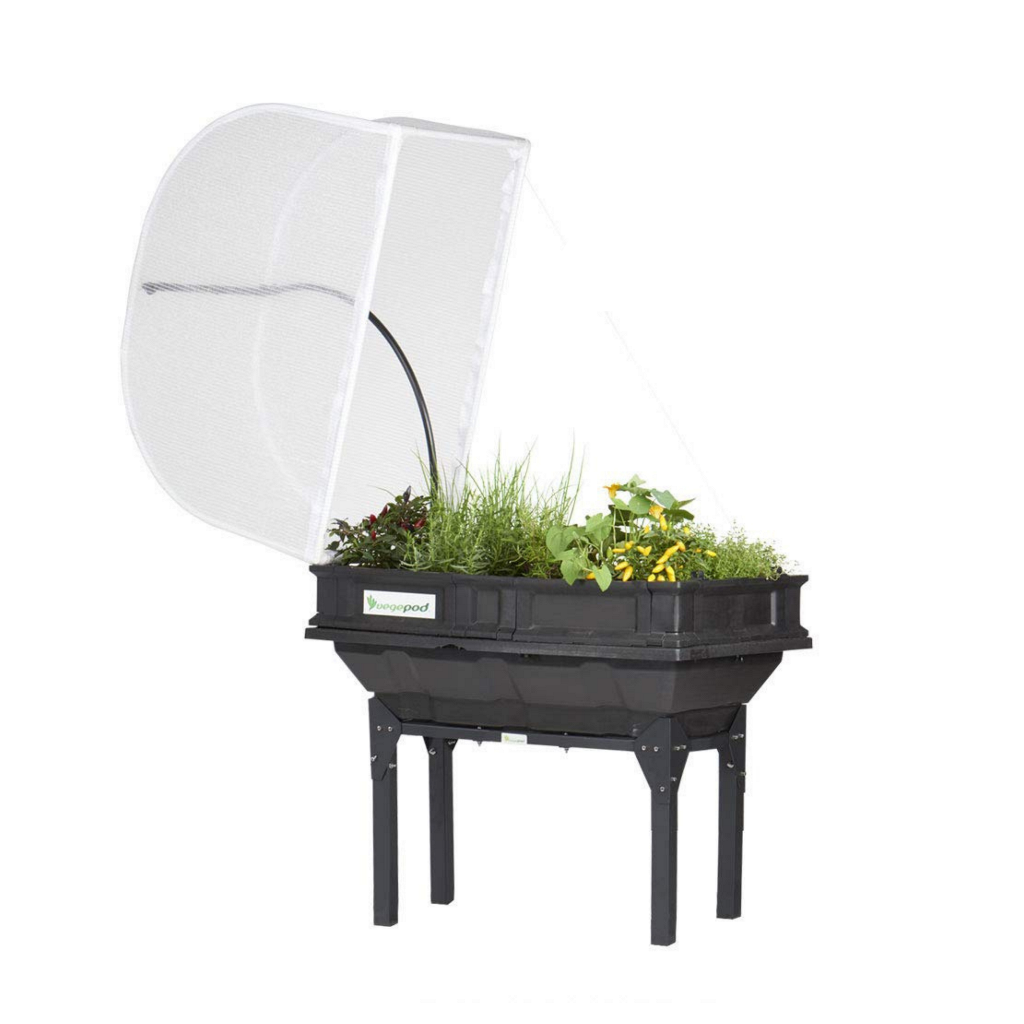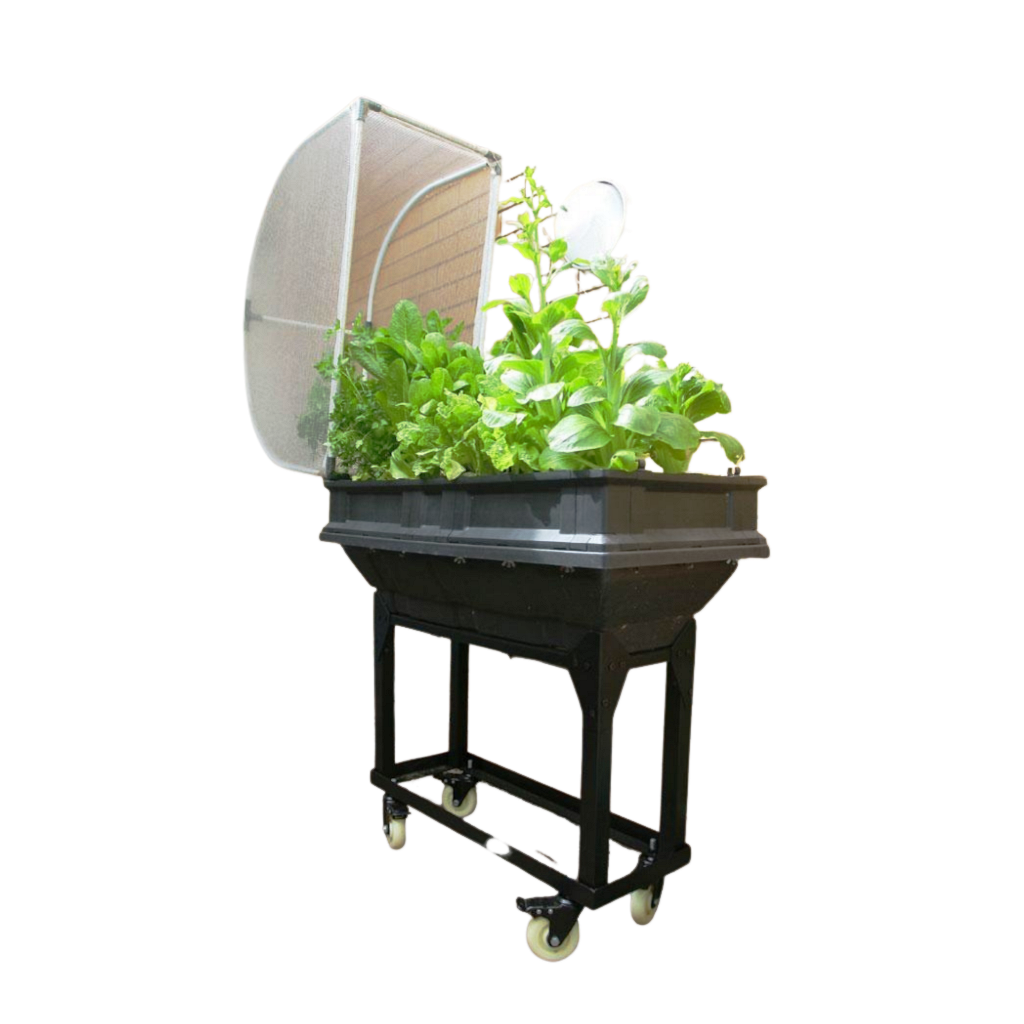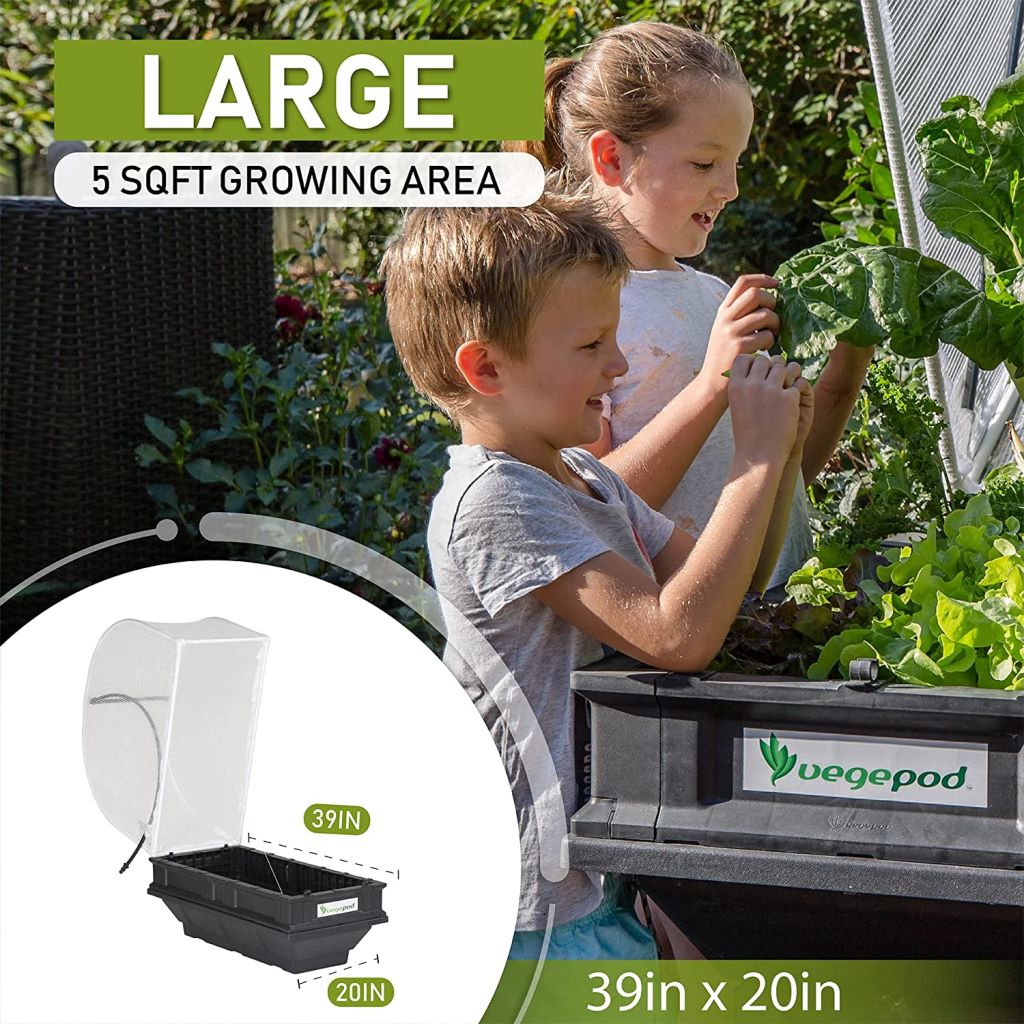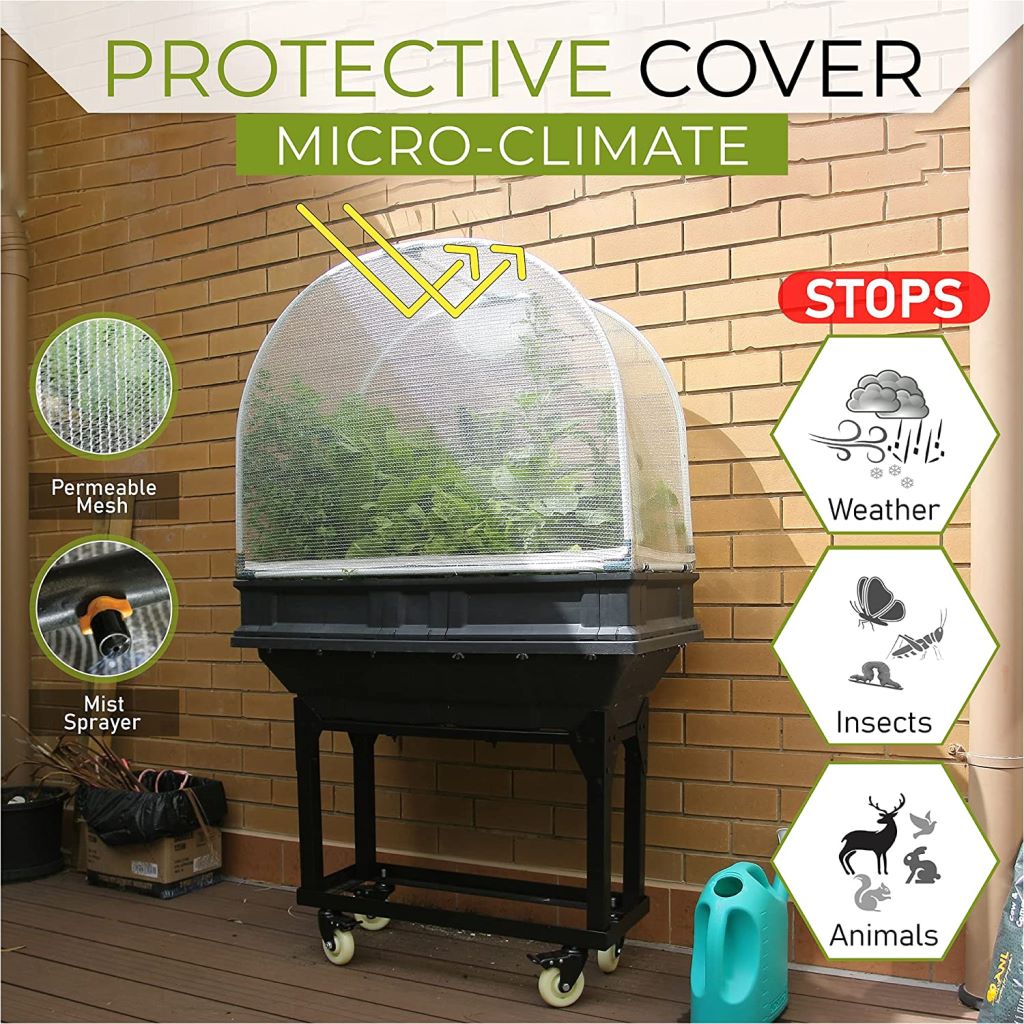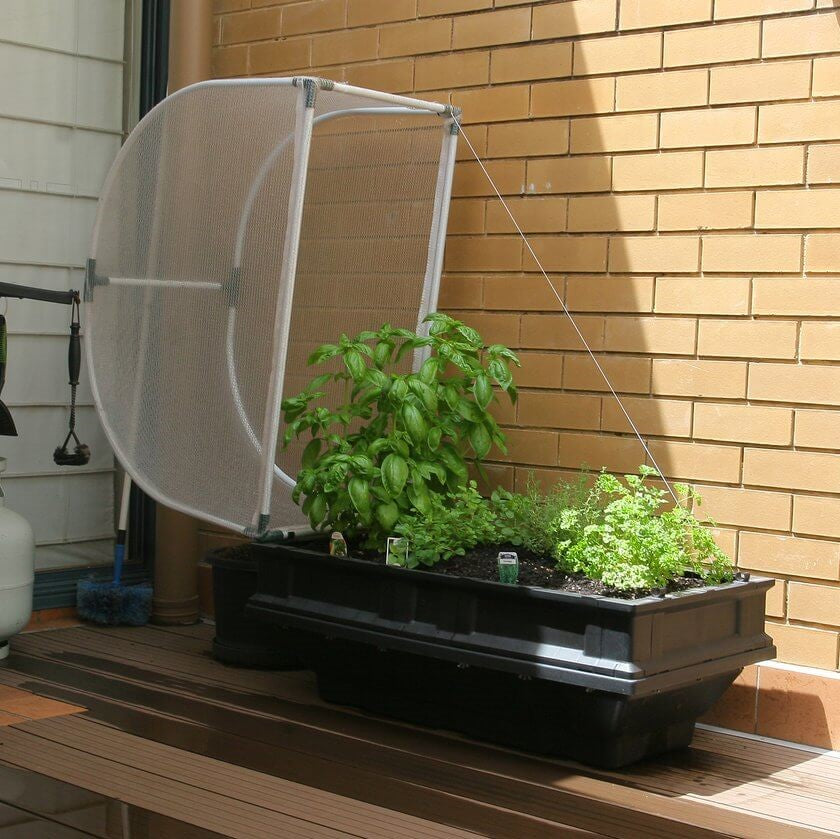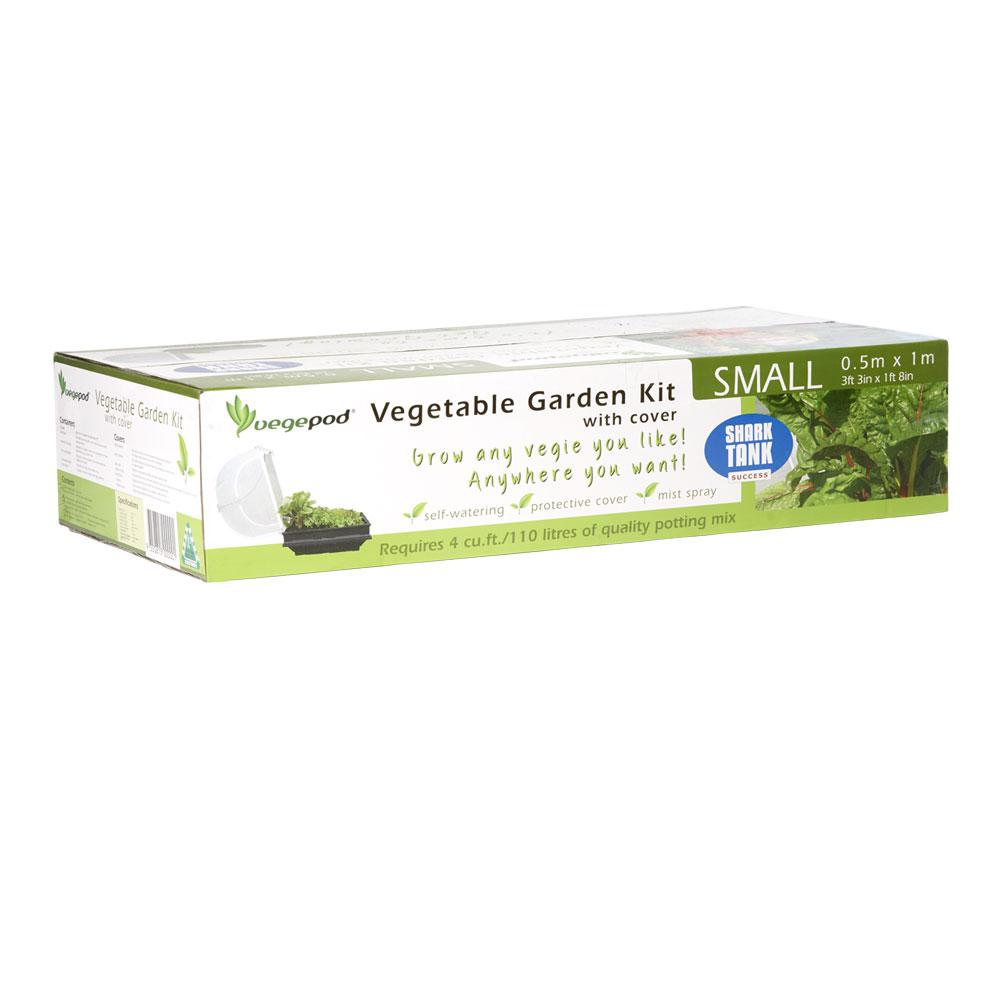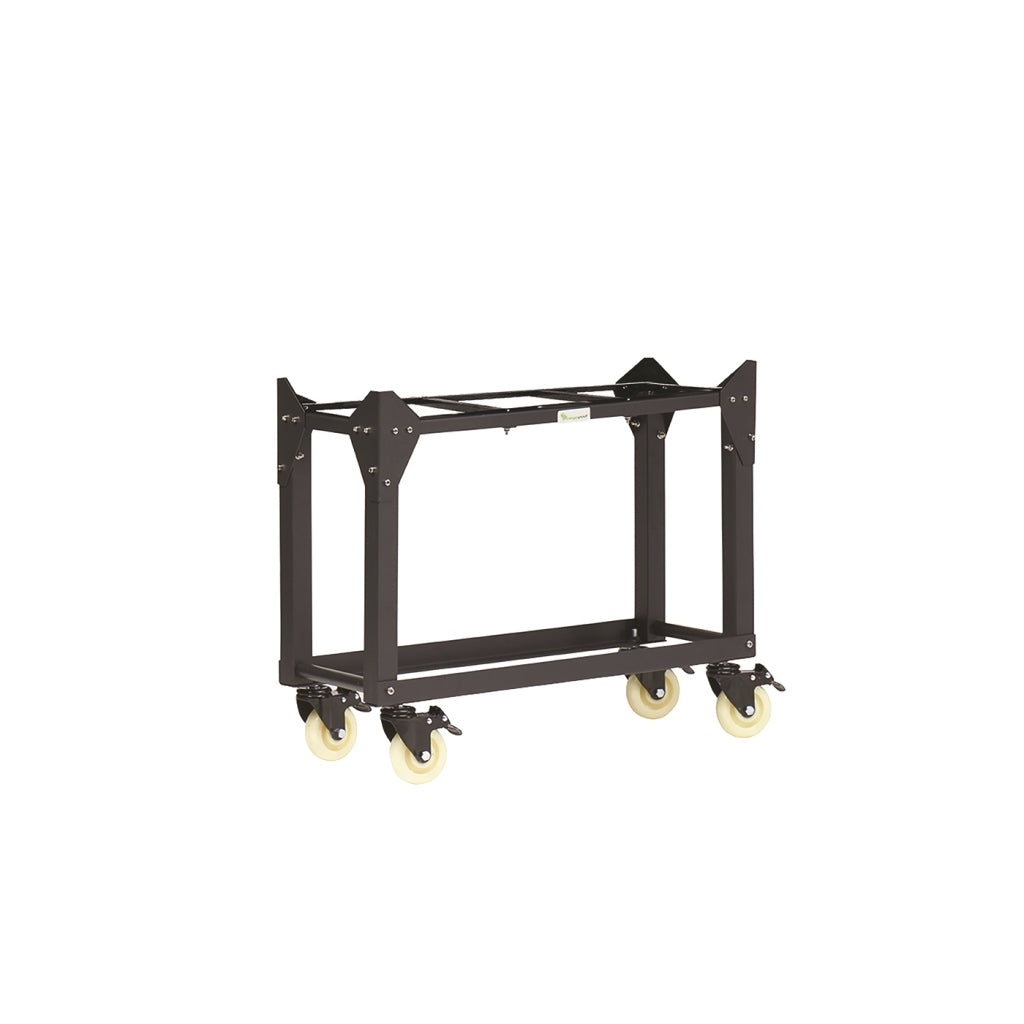Container Gardening
Description :
Vegepod is an elevated raised-garden bed perfect for space saving and growing veggies on balconies, patios and porches. It takes all the hassle out, no digging-no weeding. It's self-watering, and the permeable mesh cover keeps the pests,dusts and animal at bay while providing perfect environment for growing veggies.
Vegepods self watering garden bed allows you to extend your growing season and offers you container gardening with the minimum of work.
Application
Vegepod provides a family with a simple and easy way to grow vegetables at home.
These garden kits are the most efficient and practical for the home user. The Large Vegepod, measuring 1 m x 0.5 m is large enough to grow any vegetable . One can easily grow herbs, lettuce and chinese vegetables, carrots, zuccini, beetroot and even tomatoes. See How to Plant & maintain Vegepod
The base contains the soil so neighboring trees don't steal nutrients and it comes with a self-watering system built into the base that keeps the plants watered from below. Established plants can last weeks without watering and in cooler times your plants may not require water for months at a time.
Assembly
Set up is simple, just slide and click the panels together and bolt to the base containers to create a single, large solid garden. The Vegecover is easily assembled and attached to the garden via a unique hinged system allowing full access to all of your plants. The Vegecover not only protects your veggies from wildlife and pests but it creates its own micro-climate to promote rapid growth.
For the full tutorial on how to build your pod, see the tutorial here
Specifications :
- Material : Virgin Polypropylene
- Size (L x B x H) : 39 x 20 x 40 in
- Growing Depth : 11 in
- Metal Stand Height : 32 in
- Soil Required : 4 cubic feet
- Color : Black
Useful Tips
- Find the perfect spot in your garden, because unlike the medium sized Vegepod which is can be moved via a trolley style stand, once your large Vegepod is filled with soil, it’s not going to be an easy feat to move it.
- Test out the canopy position when setting up. When working on the Vegepod you can either remove the netted canopy completely or my advice is, from the very start – position the Vegepod a good distance from a wall or fence so that you can prop the canopy against it when open. This will save you taking it off and putting it back on all the time, especially when it’s just a quick visit for a harvest of lettuce or herbs.
- During hot weather, water water water! During the heatwave / summers steady and healthy vegges tend to bolt. And once vegetables have bolted, they’re usually inedible. Bolting means that the vegetable speeds up growth to create flowers and seeds – it’s a type of survival mechanism. One way it could have prevented is to snip the flowers and buds early on, another way would be to keep the soil temperature down by watering more.
- Be careful what you plant. Choose vegges which is suitable for the garden bed,i.e, leafy salad greens and most herbs are easily grown. Silverbeet, spinach, parsley, chard, lettuce etc. are great for continual harvest. You should avoid vine plants such as tomatoes, bitter guard, Ridge guard etc for obvious reason.
- Wait till the frost has cleared before removing the PVC winter canopy. The PVC winter canopy is a great addition to your Vegepod – it protects your growing veggies from overly wet weathered days, and from frost during winter and early spring growth. But even if you are eager to remove it and admire your growing veggies, don’t do it too soon, make sure the frosty, icy mornings and nights are over first.
- Keep an eye out for pests. The Vegepod is designed to keep pests out, and it’s perfect for that, but be aware that you might actually bring pests into your Vegepod by means of the shop bought vegetable plants you grow. So check plants for pests before you plant them. And keep the soil moist to prevent the likes of spider mites, and if you must use an insecticide always opt for the organic or natural homemade kind.

